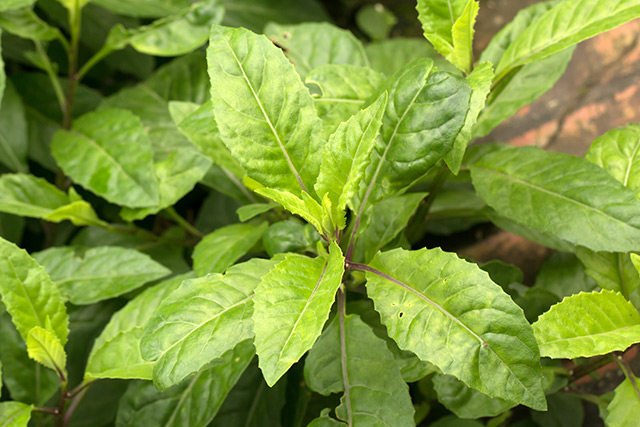
In the study published in the African Journal of Traditional, Complementary and Alternative Medicines, the researchers reviewed articles on Gynura that were published between the years 1979 to 2016, which they found through a literature search using different databases. Their search revealed that Gynura is rich in alkaloids, flavonoids, phenolic acids, terpenoids, polysaccharides, and aliphatic compounds.
Pharmacological properties of Gynura
The researchers attributed the different components in Gynura, especially the flavonoids and phenolic acids, for its numerous health benefits. Some of its most notable pharmacological properties include the following:
- Hypoglycemic activity -- Numerous studies have shown the hypoglycemic potential of the flavonoid compounds in Gynura. However, these aren't the only components in this herb that can reduce blood sugar levels. Gynura also contains fructooligosaccharides like sucrose and nystose that have anti-diabetic effects. One of the studies included in the review proposed a potential mechanism for this activity. According to their investigation, the polysaccharide inhibits disaccharidase, an enzyme that breaks down complex sugars into simpler forms that can be absorbed by the body. Furthermore, Gynura contains caffeic acids that inhibit protein tyrosine phosphatase 1B (PTP1B), which is a negative regulator of insulin receptor signaling.
- Hypotensive effect -- Extracts from Gynura significantly reduce blood pressure. It also increases the nitric oxide content of serum, which relaxes the blood vessels for better blood flow, and the activity of the antioxidant enzyme superoxide dismutase.
- Hypolipidemic activity -- Gynura can prevent atherosclerosis, a disease characterized by the build-up of cholesterol in the blood vessels, through its flavonoid content. This herb also has potential therapeutic applications against hyperlipidemia since it can reduce triglyceride levels. However, previous studies have only observed this effect in hyperlipidemic rats.
- Anticancer effect -- Compounds like kaempferol and quercetin in Gynura have shown potent anti-proliferative activity. Additionally, this TCM herb is rich in flavonoids that have a wide range of effects ranging from antioxidant to antibacterial to anticancer activity. Studies have shown that diets rich plant flavonoid can reduce cancer risk.
- Antioxidant potential -- Polyphenols and flavonoids are potent antioxidants found in Gynura. These can prevent free radicals from inflicting damage on proteins, lipids, and DNA, which can lead to chronic diseases like diabetes, cancer, and atherosclerosis. Flavonoids achieve this by activating antioxidant enzymes in the body. Meanwhile, phenolic acids have inherent antioxidant activity. (Related: Antioxidants found to be effective in treating mitochondrial disease, preclinical trials find.)
Nutritional benefits of Gynura
Gynura was recently approved in China as a new source of food. But prior to this, Gynura was already enjoyed by many people as a highly nutritious vegetable. This herb is rich in proteins, fiber, vitamin C, and minerals.
The shoots of the Gynura plant are commonly used to make soup, which they also used as a folk remedy for insomnia, digestive problems, diabetes, and high blood pressure. Some people also use the branches and leaves of this herb to make soup, tea, and even savory dishes containing pork.
Read more news articles on different traditional Chinese medicines by visiting ChineseMedicine.news.
Sources include:
Education.QuestDiagnostics.com
Please contact us for more information.























